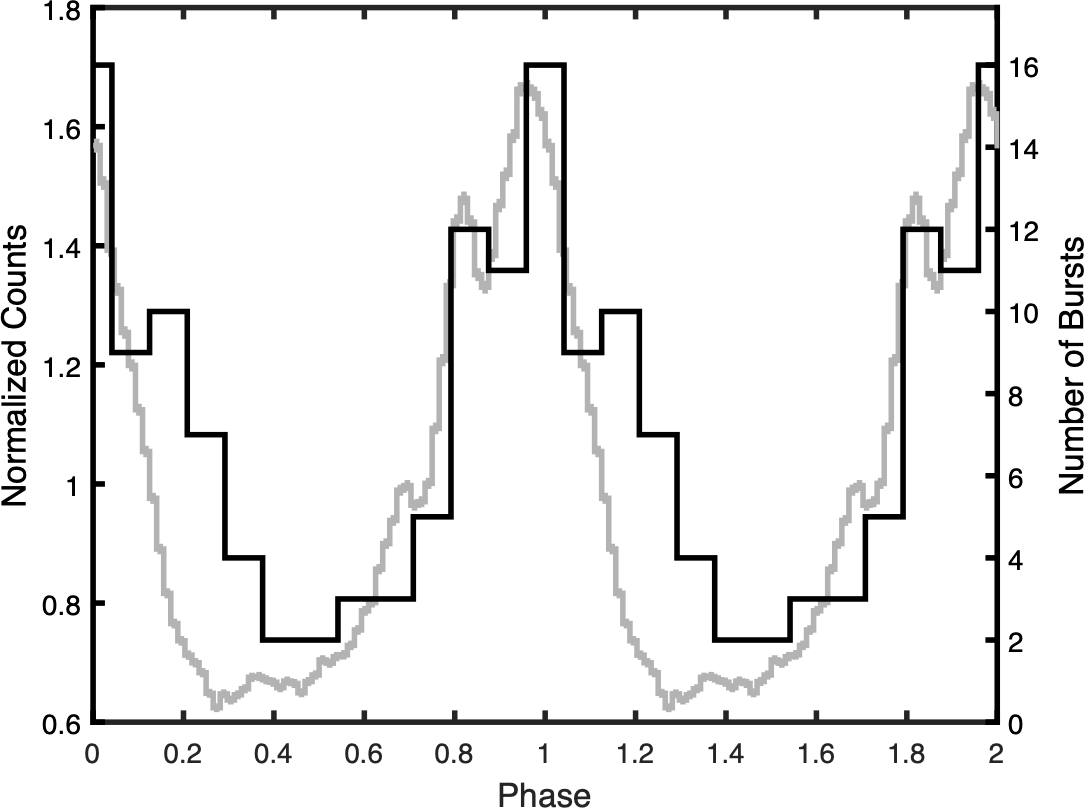NICER / ISS Science Nugget
for November 11, 2021
NICER Hones In On the Origin of Short Bursts from Magnetars
Recently accepted for peer-reviewed publication was the first of two papers by G. Younes (NASA/GSFC) & collaborators describing NICER's campaign of observations of the magnetar SGR 1830-0645 at the start of a months-long outburst, following its discovery in October 2020. NICER observations helped confirm the magnetar nature of SGR 1830 (see our 15 October and 12 November 2020 reports) via timing of its pulsations and the detection of millisecond-duration bursts, revealing properties consistent with other known magnetars, neutron stars with the strongest magnetic fields known in nature, trillions of times stronger than Earth's magnetic field.
Among other findings, the newly accepted paper demonstrates for the first time that the short bursts from SGR 1830 — 84 detected in total, with an average duration of 30 milliseconds — cluster at rotation phases around the peak of the persistent pulsed emission in soft X-rays (see Figure). NICER spectroscopy clearly establishes that the persistent X-rays are produced thermally; i.e., from hot-spots on the star's surface. The close association in rotation phase between the persistent and burst X-rays suggests that the bursts originate in processes at low altitude and approximately co-located with the surface active zones, which are believed to be the "footpoints" of the star's magnetic field. Models that invoke twisted field lines near the magnetic poles or starquakes in the star's crust as the origin for short bursts are favored by the new NICER data, while those that create bursts in the outer magnetosphere or beyond are disfavored, for at least the bursts detected in SGR 1830. Continued NICER monitoring of magnetars in outburst will expand our knowledge of the exact triggering locale and physical mechanism for this topical phenomenon.

Figure: Average pulse profile of SGR 1830-0645 (gray) in the energy range 0.8-7 keV; two cycles of the 10.4 sec period are plotted for clarity. The black histogram represents the distribution of detected short-burst times, mapped into rotation phase given the stellar spin rate established by the persistent pulses.
<< Previous
Main Index
Next >>